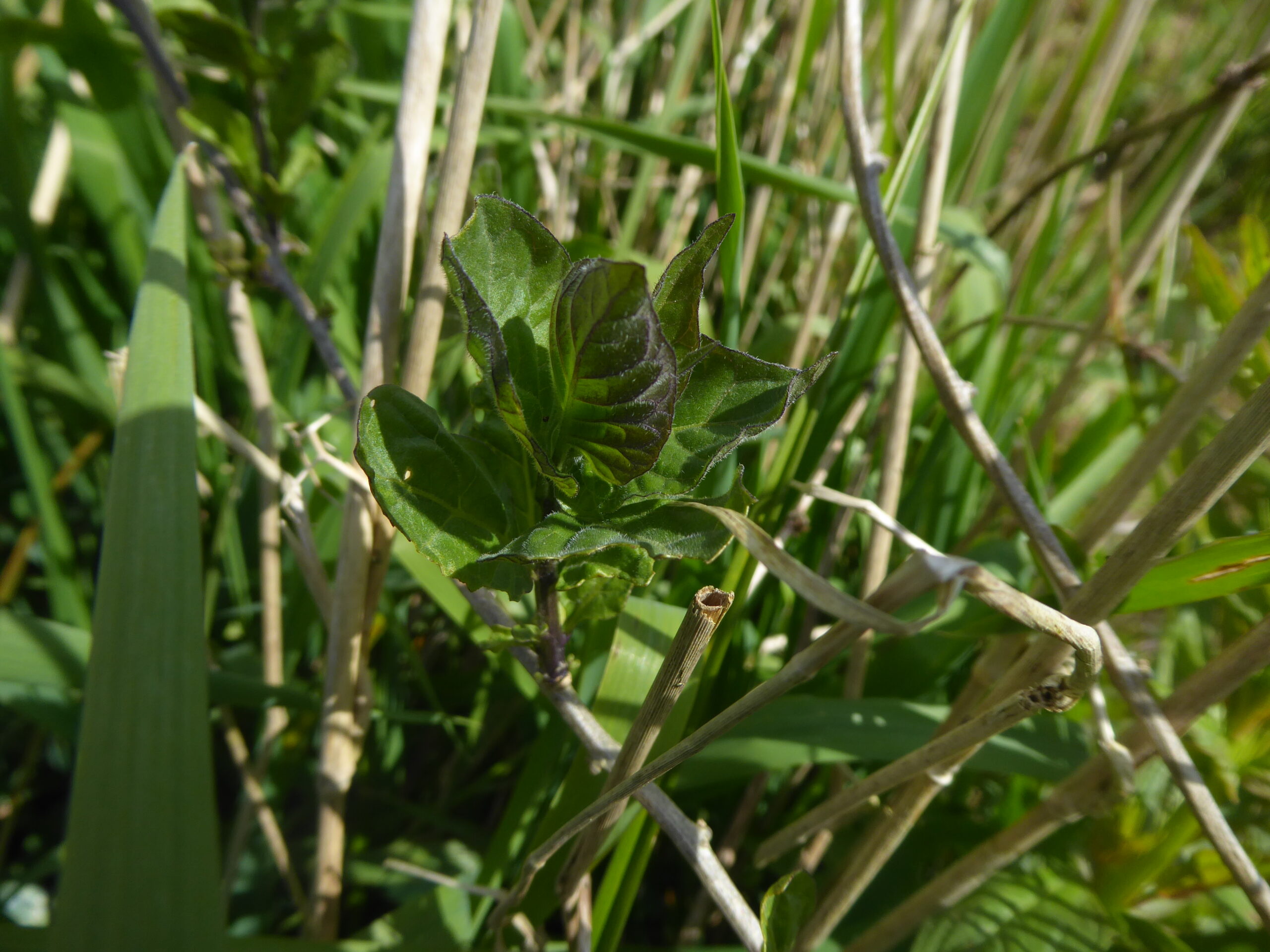Today Mr C and I went down to the watermeadow armed with secateurs and a wheelbarrow to get in and cut down hemlock water dropwort before it flowers. We had spotted a few in the last month or so, they are growing quite tall now, and although just cutting them down won’t kill them, it will prevent them from flowering and hopefully weaken them for the rest of the summer. We also pulled up any common nettles that were near the pathways.
While we were down there, I spotted a few things. One thing I noticed was that there is quite a lot of honeysuckle weaving amongst the grass in the far-left corner of the meadow. I was surprised that I hadn’t noticed it last summer as it would have been in bloom from July, but perhaps it was too obscured in the middle of a wild patch.
I identified it as Japanese honeysuckle – another non-native but common in the southern half of Britain. We have some in the top garden that twines among other shrubs but is not the same as potted specimens that we brought with us. I was surprised to find it so close to the stream – it must have been largely submerged over the winter. However, apparently Japanese honeysuckle doesn’t like dry soil, though it prefers soil which drains well. Also, it likes a sunny spot. It is a climbing shrub, which in the absence of trees and walls will probably continue to ramble. The leaves have a soft fuzz and seem to be growing in clumps separated by a slim woody stem, or runner. The flowers will be whitish when they arrive and the berries will be red, turning black. It is semi-evergreen, which means it loses its leaves for a short while before new growth starts.
